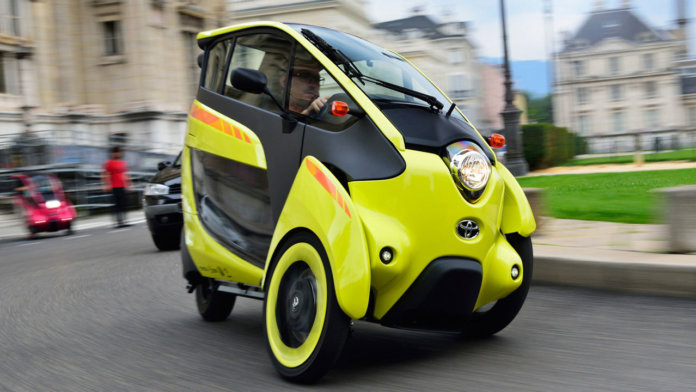Everyone should have a way to get from point A to point B. For most of us, this is a tried and tested machine. Alternatively, you can use a motorcycle, bicycle, skateboard, scooter, or your own legs. There are also public transportation options such as bus, trolleybus and metro.
But the imagination of inventors is not limited to such banal means of transportation. And in different countries of the world from time to time, the most unusual and bizarre modes of transport appeared, many of which are still in use today.
10. Horse Ferry, USA and Canada
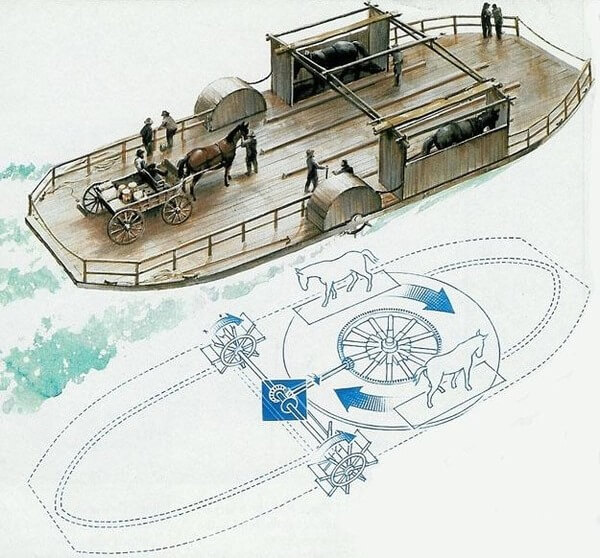
At the end of the 18th century in the United States, and then in Canada, a ferry appeared to transport people and supplies by water. It was set in motion by live force, but not two-legged, but four-legged.
Two or more horses walked in a circle, turning the gate. Its movement was transmitted through a transmission to a propulsion device, which was played by a paddle wheel, or propellers.
In the late 19th century in New York, horse-breeding ships competed successfully with steamships. The newspapers of the time wrote that a horse-drawn ferry with 8 horses could take 200 passengers on board and cross the East River in 8-12 minutes, at about the same speed as a steamer.
And the last horse-drawn ferry in the United States, sailing the Cumberland River in Tennessee, operated until the late 1920s. However, as Comrade Bender said, though on a different occasion, “the iron horse is replacing the peasant horse,” and the exotic means of transportation on water is a thing of the past.
9. Bamboo train, Cambodia
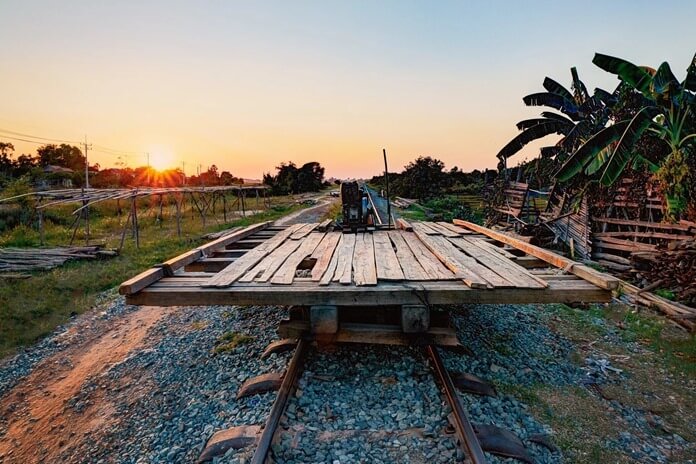
The French first built railway lines in Cambodia in the 1920s, and the development of the railway industry continued until 1953, when French rule ended.
In 1967-1975, a civil war was going on in the country, which ended with the coming to power of the Khmer Rouge regime. By the time it ended, 20% of the population (1.4 million) had died at the hands of the Khmers, starvation or overwork. And most of the railroad tracks were dismantled or mined.
In this situation, people needed an alternative to conventional trains. And the hardworking Cambodians created the Norri bamboo train. It is a 1-meter-wide railway track along which trolleys move. Norrie is powered by a tractor or motorcycle engine. Until 2016, bamboo trains did not even have brakes, and braking was done by the engine or even by the feet of passengers.
Local residents can spend 50 cents on a trip, tourists - ten times more. The bamboo train does not move very fast, with an average speed of 50 km / h, and passengers have a beautiful view of the Cambodian countryside.
8. Sled baskets Toboggan, Portugal
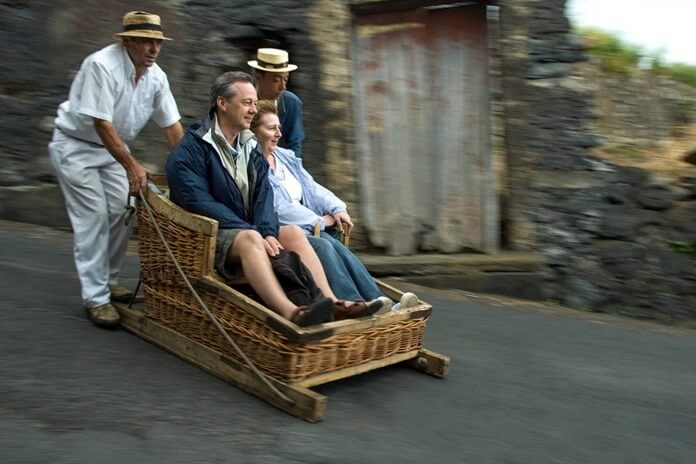
In the 19th century, the inhabitants of the mountain village of Toboggan in Madeira wanted a quicker route to the city of Funchal. And for this we chose an original and unusual type of transport - baskets made of willow twigs.They were placed on oiled wooden slats to glide along the roads.
This construction was driven by two carreiros drivers, traditionally dressed in white trousers and shirts, a straw hat and special boots with thick soles to slow down when cornering. And the control was carried out using ropes tied to the slats.
Nowadays, such riding has become a popular pastime for tourists. A ten-minute descent on an asphalt mountain road will cost 25 euros for one person and 30 euros for two.
7. Coco Taxi, Cuba
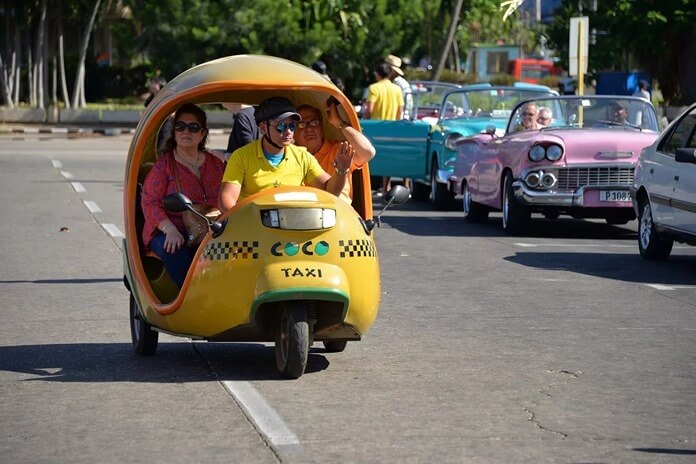
One of the most unusual forms of transport in the world resembles a giant yellow helmet with seats and wheels. It can be compared to a huge Pac-Man with people inside. However, coco-taxis got their name from the similarity to coconut, according to local residents.
Coco Taxi is quite noisy and slow, but very popular with tourists.
6. Barco de Totora, Peru
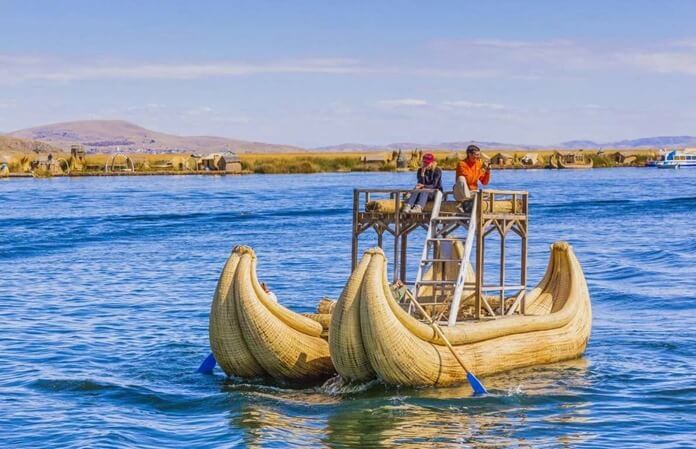
If you visit Lake Titicaca - one of the the most popular tourist destinations in the world - then we recommend crossing its beautiful waters aboard the famous Totor boats.
Created from dried bunches of Totori reeds growing along the shores of the lake, they resemble dragons in appearance. It is believed that this form originally helped scare away evil spirits.
5. Jeepney, Philippines
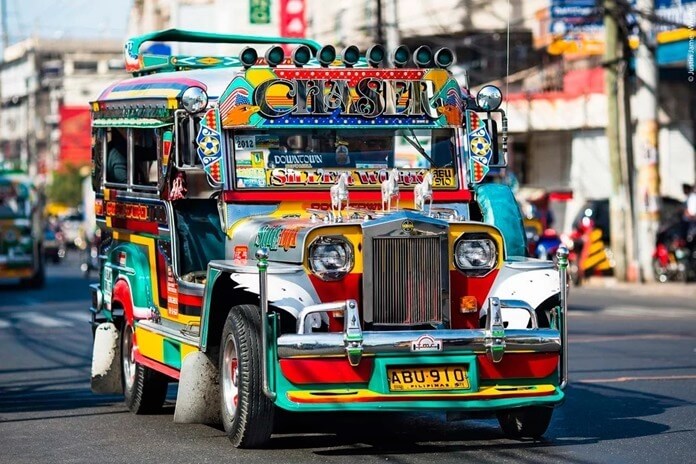
A large and colorfully painted passenger taxi that resembles an American jeep has been a part of the daily life of most people in the Philippines for almost 80 years.
The original Jeepney was made from Jeep parts abandoned by American forces after World War II. After the war, the Philippine government did not create a public transport system, so jeepney became the most popular form of transport.
Jeepney works like buses. But, unlike most buses we are used to, Jeepney cars are usually painted in bright colors and complemented by beautiful ornaments, and sometimes even the driver's name.
Much to the chagrin of the general public, President Rodrigo Duterte has ordered all Jeepney over fifteen years of age to be removed from routes by 2020 and replaced with more environmentally friendly versions.
4. Knock knock, Thailand
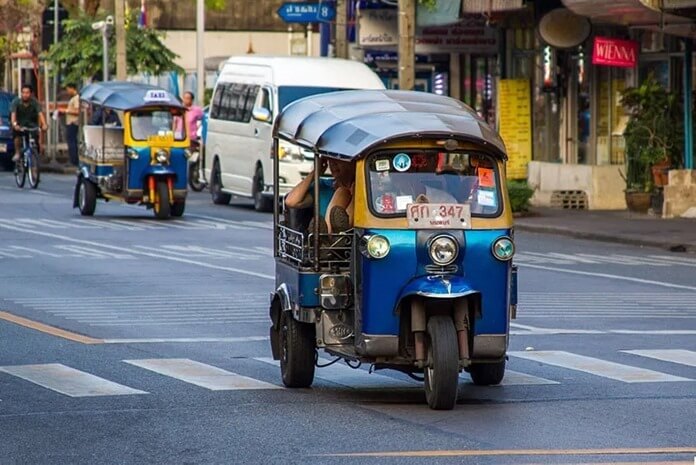
Similar to the jeepney, the tuk-tuk (also known as the auto-rickshaw) emerged after World War II as a response to the lack of vehicles.
Today, tuk-tuk can be found on almost every continent, but it is most common in Africa and Asia. In Thailand, tuk-tuk owes its roots to the Japanese, who popularized it during the occupation of the region during World War II.
Older models were powered by a 350 cc two-stroke engine. cm, which, when moving, made the sound "knock knock." Modern tuk-tuks are equipped with a 660cc four-stroke engine. cm, which makes them much quieter.
The Thai tuk-tuk with a blue and yellow color scheme has become a kind of symbol of the country.
3. Water jet boats, New Zealand
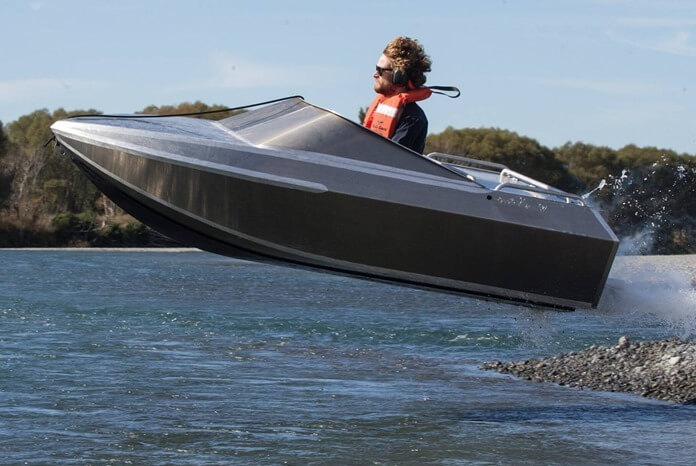
New Zealand's Shotover River serves as the backdrop for one of Oceania's most exciting ways to travel. Jetboats, equipped with two V8 engines and a total capacity of 700 horsepower, are speeding along it.
Water is drawn in through the intake grille located at the bottom of the housing. Through the nozzle, water (25 thousand liters per minute) is drawn in by the internal propeller. And then he pushes it out, allowing the boat to move at a speed of 85 km / h.
2. Suspended tramway, Germany
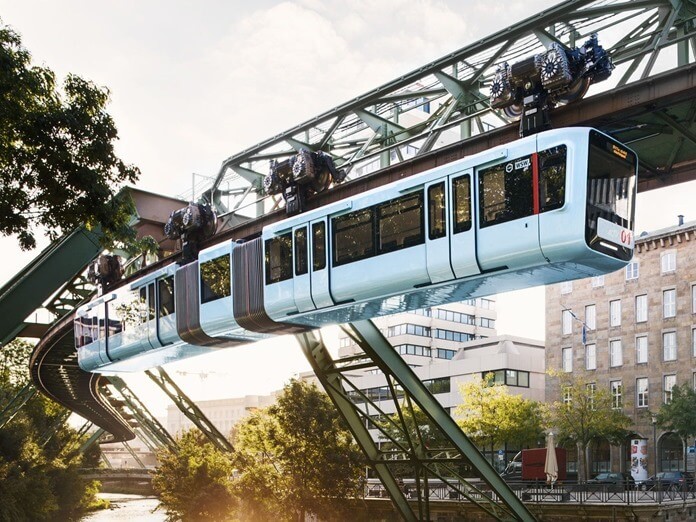
If you've ever watched Amazon's The Man in the High Castle, you've seen futuristic technology from Germany's alternate past, including the Berlin monorail.
However, in real life, you will have to drive a little away from the German capital in order to see the country's only example of mass transit on a monorail suspension road.
The Wuppertal Cable Car, located in the western part of Germany, in North Rhine-Westafalia, at first glance looks more like a roller coaster than public transport. This is one of the strangest ways to travel not only in Germany or Europe, but around the world.
1.Rolls Royce 103EX, UK
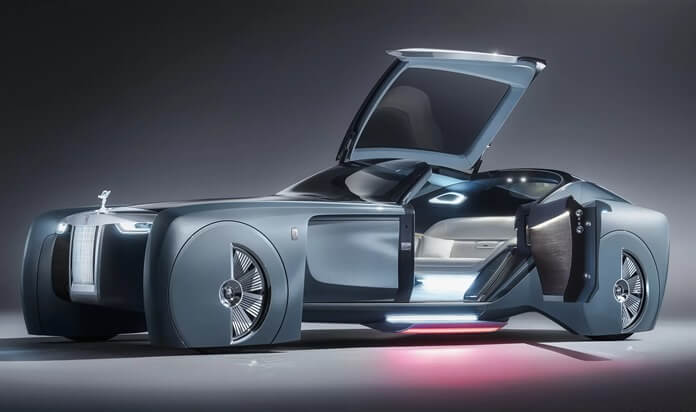
Topping the list of the world's most extraordinary vehicles is the Rolls Royce 103EX concept car, aka Vision Next 100. This is a luxurious iron behemoth that is intended to advertise the future of automotive solutions. The interior features a silk lounge chair, natural wood and a handmade woolen carpet.
The car is equipped with a virtual assistant and chauffeur known as Eleanor. Their manufacturer's website states that "each Rolls-Royce will not be designed like a car, but rather as a separate sculpture made from one seamless surface."
Unfortunately, the Rolls Royce 103EX will never be mass-produced. However, it promises intriguing things not only for the future of luxury cars, but possibly radical changes in transportation in general.

